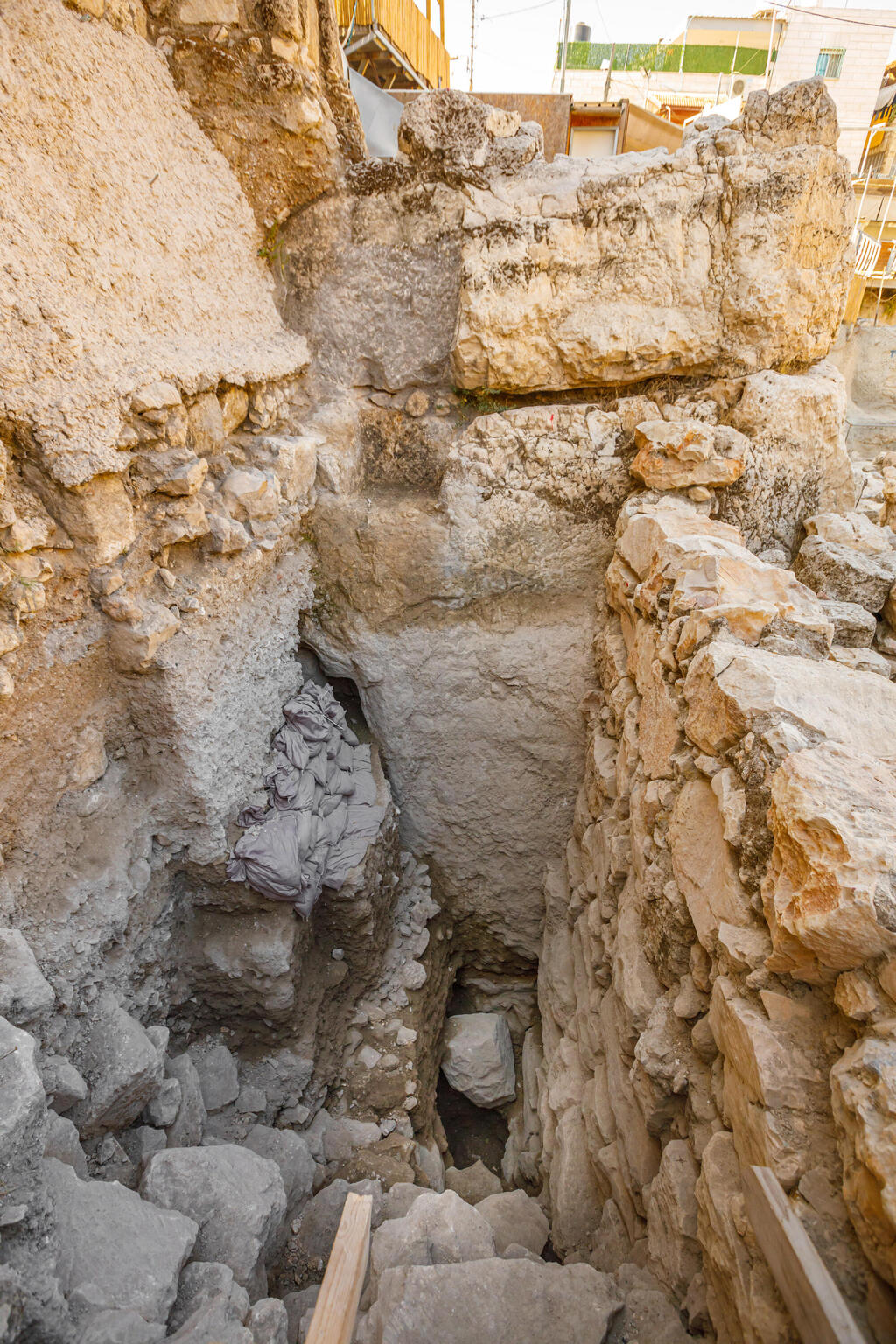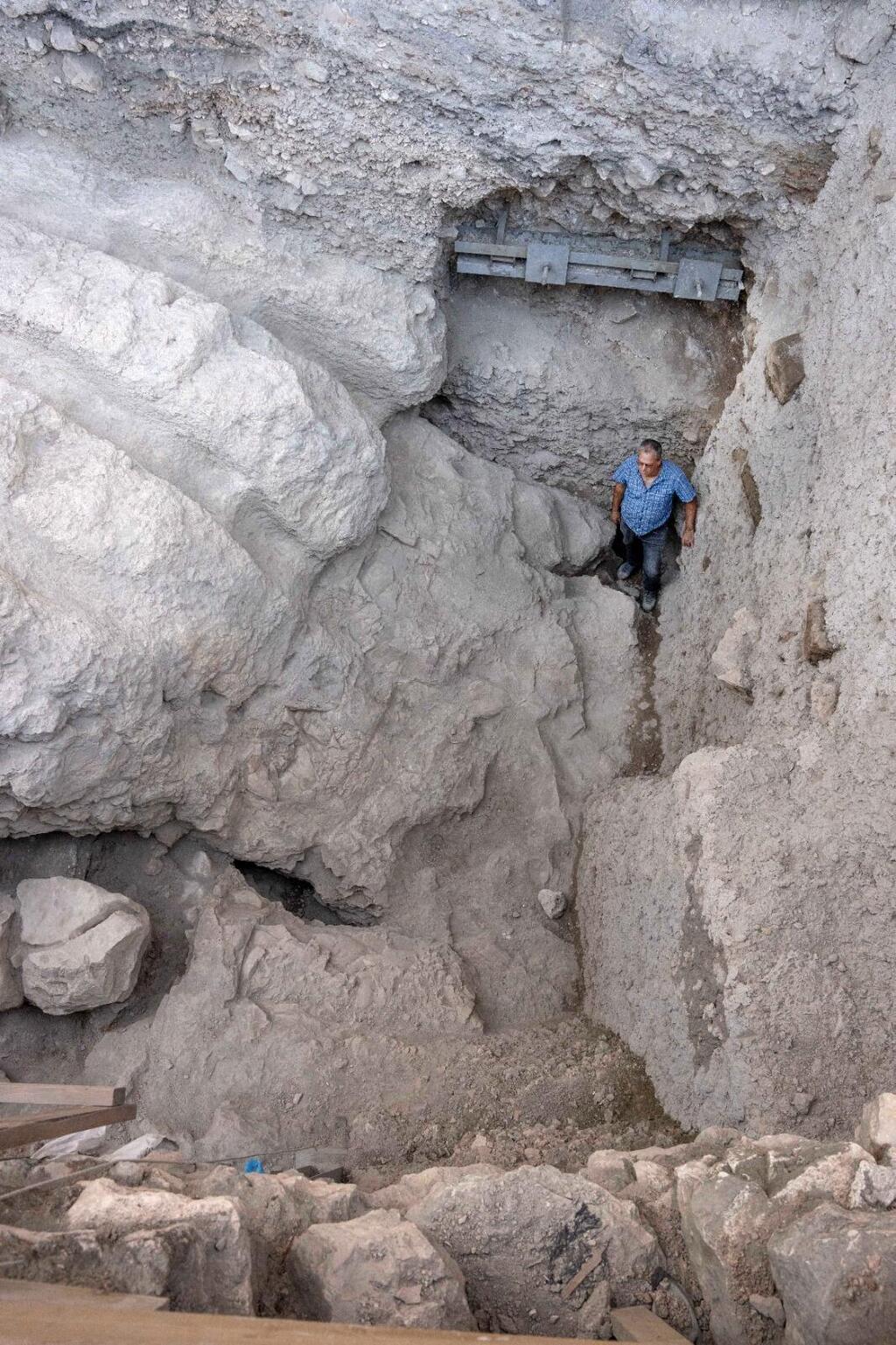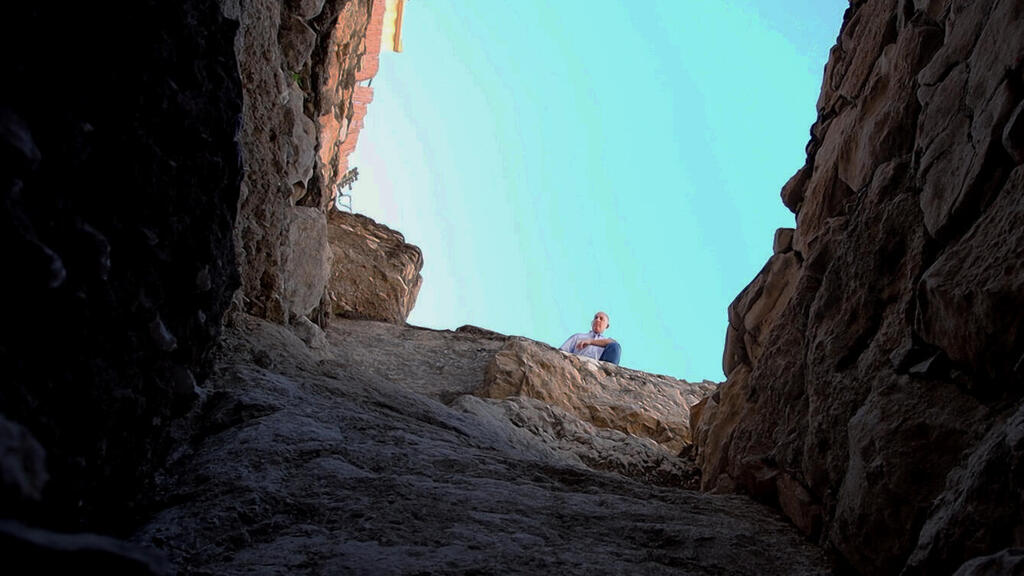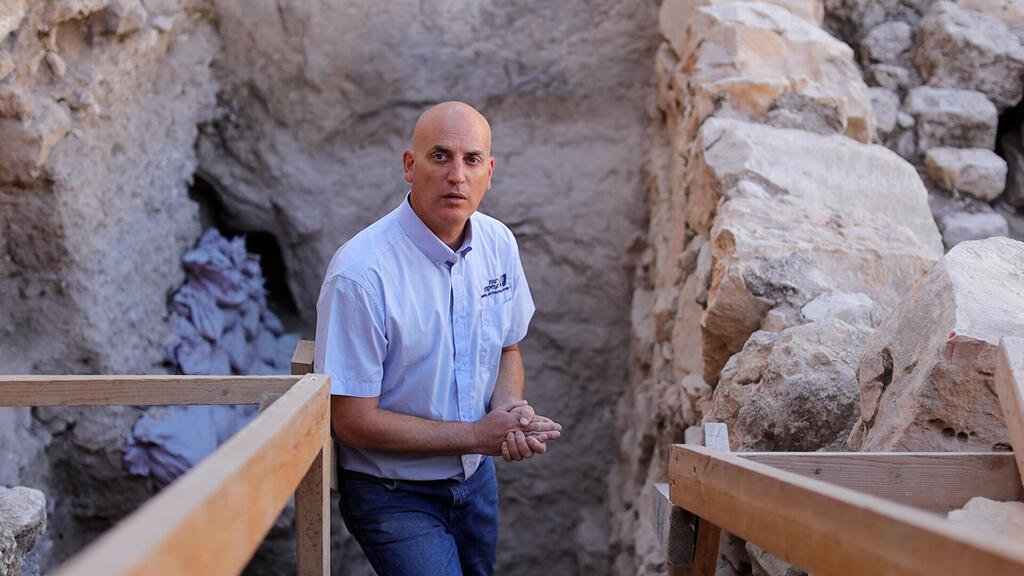A monumental fortification discovered in the Givati Parking Lot excavations within the City of David in the Jerusalem Walls National Park solves a 150-year-old mystery. Created by extensive quarrying, the moat formed a massive channel separating the City of David from the Temple Mount and the Ophel area.
Perpendicular cliffs on both sides of the moat rendered it impassable. Initially, the purpose of this rock carving was unclear, but further excavations, and linking it with past discoveries, helped to reveal it as the northern fortification line of the lower city.
According to the excavation’s directors, Professor Yuval Gadot from the Department of Archeology and Ancient Near Eastern Cultures at Tel Aviv University and Dr. Yiftah Shalev from the Israel Antiquities Authority (IAA), "it is not known when the moat was originally cut, but evidence suggests it was used during the centuries when Jerusalem was the capital of the Kingdom of Judah, almost 3,000 years ago, beginning with King Josiah.
"During those years, the moat separated the southern residential part of the city from the ruling Acropolis in the north; the upper city where the palace and the temple were located.”
The IAA explained that the creation of the moat was a large-scale, monumental operation, designed to change and modify the natural topography to demonstrate the power of Jerusalem's rulers to those who come through its gates.
According to the researchers, this construction, which required significant engineering skills and resources, stressed the strength and capability of the city's rulers at the time. The moat itself is at least nine meters deep and no less than 30 meters wide.
The IAA added that, over the past 150 years, numerous attempts by researchers and archaeologists to trace the route of Jerusalem's northern fortification have been made, but it has only now been definitively revealed during the Givati Parking Lot excavations. These excavations are taking place in the City of David, managed by the Israel Antiquities Authority and Tel Aviv University, and funded by the City of David Foundation.
"Following the dramatic discovery, we reexamined the past excavations reports written by the British archaeologist Kathleen Kenyon, who excavated in the City of David in the 1960s, in an area located slightly east of today's Givati Parking Lot,” Gadot said.
“It became clear to us that Kenyon noticed that the natural rock slopes toward the north, in a place where it should naturally have risen. She thought it was a natural valley, but now it turns out that she had uncovered the continuation of the moat, carved to the west. The connection of the two uncovered sections creates a deep and wide moat that extends across at least 70 meters, from west to east,” according to Gadot.
"This is a dramatic discovery that opens up a renewed discussion about the terms from the biblical literature that refer to the topography of Jerusalem, such as the Ophel and the Millo," he added.
Shalev also commented on the discovery, saying that "the date the moat was cut is unknown. Such significant construction plans and quarrying in Jerusalem are usually dated to the Middle Bronze Age - about 3,800 years ago (the beginning of the 2nd millennium BCE).
"If the moat was cut during this period, then it was intended to protect the city from the north - the only weak point of the City of David slope. Either way, we are confident that it was used at the time of the First Temple and the Kingdom of Judah (ninth century BCE), so it created a clear buffer between the residential city in the south, and the upper city in the north,” according to Shalev.
“Ancient Jerusalem was built on top of a narrow and steep ridge, expanding over hills and valleys that divided it into distinct parts, making it difficult to move from one unit to the other. Therefore, it is not surprising that many of the royal construction enterprises in Jerusalem were connected with the need to reshape the topography," he said.
"For example, in the first book of Kings (11:27), an action of this type that King Solomon performed is mentioned: "Solomon built up the 'Millo' and closed up the breach of the City of David, his father,” he explained.
It now becomes clear that throughout the Iron Age (the days of the First Temple) - the period in which the books of the Bible were compiled- the city was divided into at least two distinct parts. This separation remained also during the Persian and Hellenistic periods.
Israel Antiquities Authority Director Eli Eskosido, praised the discovery. "The excavations in the City of David never cease to amaze; once again, discoveries are being revealed that shed new and vivid light on the biblical literature. When you stand at the bottom of this giant excavation, surrounded by enormous hewn walls, it is impossible not to be filled with wonder and appreciation for those ancient people who, about 3,800 years ago, literally moved mountains and hills," he said.
The results of the excavation will be presented at the City of David's "Jerusalem Studies Experience" Conference, taking place in early August.





